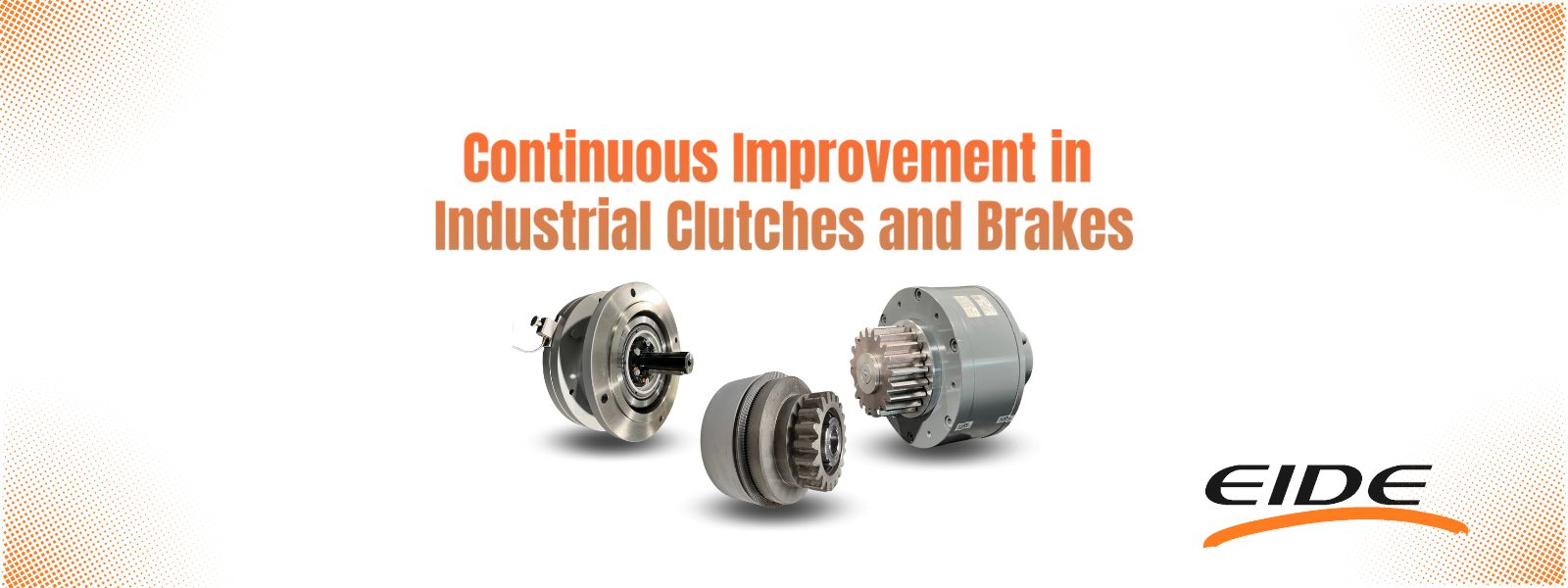
Continuous Improvement in the Manufacturing
Innovation and Efficiency
In an increasingly competitive industrial landscape, continuous improvement has become a cornerstone for ensuring quality, efficiency, and sustainability in manufacturing processes. In the realm of industrial clutches and brakes, this philosophy not only fosters innovation but also ensures that products meet the precision, durability, and safety demands of machinery manufacturers, distributors, and end-users. In this article, we explore how continuous improvement transforms the production of these critical components and why it is key to staying ahead in the industry.
What is Continuous Improvement?
Continuous improvement, rooted in methodologies like the PDCA Cycle (Plan, Do, Check, Act) or approaches such as Lean Manufacturing and Kaizen, focuses on optimising processes incrementally and consistently. Rather than implementing drastic changes, it involves identifying opportunities for enhancement, applying solutions, and evaluating results to achieve sustained progress.
In the context of manufacturing electromagnetic clutches, industrial brakes, and torque limiters, continuous improvement spans from product design to distribution logistics, including material optimisation and waste reduction.
Continuous Improvement in Industrial Clutches and Brakes
1. Innovation in Design and Materials
Continuous improvement drives the development of more efficient and durable clutches and brakes. Leading manufacturers, with decades of experience in the field, invest in R&D to create components that withstand higher loads, reduce wear, and minimise energy consumption.
- Electromagnetic clutches: Optimising coil and disc systems enables faster response times and reduced heat generation, extending component lifespan.
- Spring-applied brakes: Advances in friction materials ensure greater wear resistance, even in high-demand applications like heavy machinery or automated production lines.
- Torque limiters: More precise designs protect mechanical systems by preventing overloads and reducing unplanned maintenance.
2. Optimisation of Production Processes
Manufacturing industrial clutches and brakes requires meticulous precision. Continuous improvement in production processes enables companies to achieve superior quality standards while cutting costs. Common practices include:
- Automation and digitalisation: Integrating technologies like IoT sensors and real-time monitoring software helps detect defects early in production, minimising waste.
- Lean Manufacturing: This approach eliminates non-value-adding activities, such as downtime or excess inventory, optimising the supply chain.
- Quality certifications: Standards like ISO 9001:2015 ensure that every stage of the process, from raw material sourcing to final assembly, meets international benchmarks.
3. Customisation for Clients
Continuous improvement also manifests in the ability to offer tailored solutions. For industrial clutches and brakes, manufacturers collaborate closely with clients to develop components suited to specific applications, whether in agricultural machinery, cranes, conveyor systems, or renewable energy systems. This approach not only enhances customer satisfaction but also positions companies as strategic partners in the market.
4. Sustainability and Energy Efficiency
Sustainability is a key component of continuous improvement. Manufacturers of industrial clutches and brakes are adopting greener practices, such as:
- Reducing hazardous materials: Using recyclable or low-impact materials in friction discs and casings.
- Energy efficiency: Designs that minimise energy consumption in electromagnetic clutches, contributing to more sustainable operations.
- Waste management: Optimised processes to reduce production waste, aligning with circular economy goals.
Benefits of Continuous Improvement for Companies
Adopting continuous improvement in the manufacturing of industrial clutches and brakes offers numerous advantages:
- Greater competitiveness: High-quality products and efficient processes enable companies to stand out in global markets.
- Cost reduction: Eliminating waste and optimising resources lowers operational expenses.
- Customer satisfaction: More reliable and customised components build trust and loyalty.
- Adaptability to change: Continuous improvement equips companies to respond swiftly to new technologies or regulations.
Continuous improvement is more than a methodology; it is a mindset that drives innovation and excellence in the manufacturing of industrial clutches and brakes. In a sector where reliability and precision are paramount, companies that embrace this philosophy not only meet market expectations but exceed them. From designing more durable components to implementing sustainable processes, continuous improvement is the key to building a more efficient and competitive future.
If you’re seeking clutch or brake solutions that combine quality, innovation, and customisation, choose manufacturers committed to continuous improvement. It’s the guarantee of optimal performance and a long-term investment!



